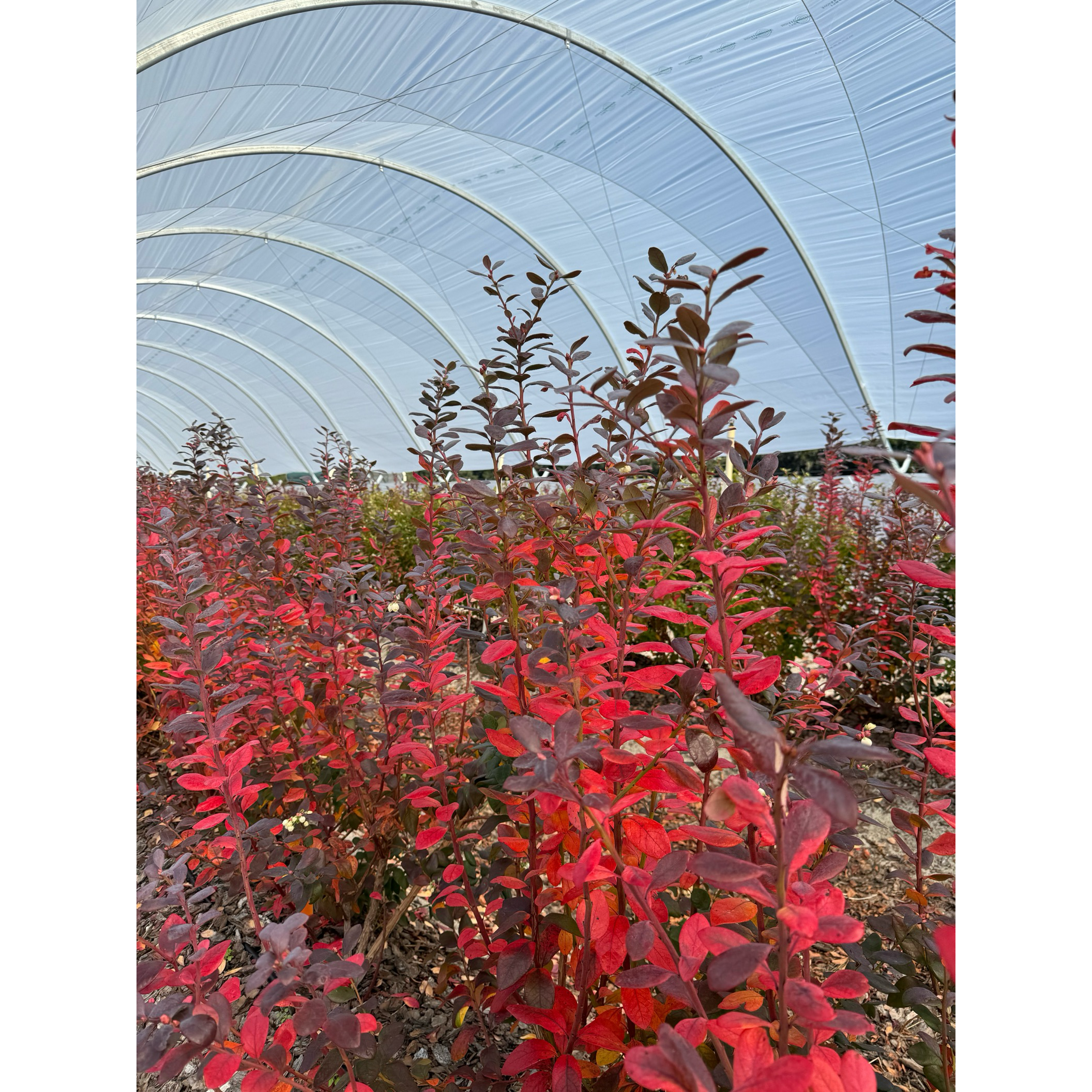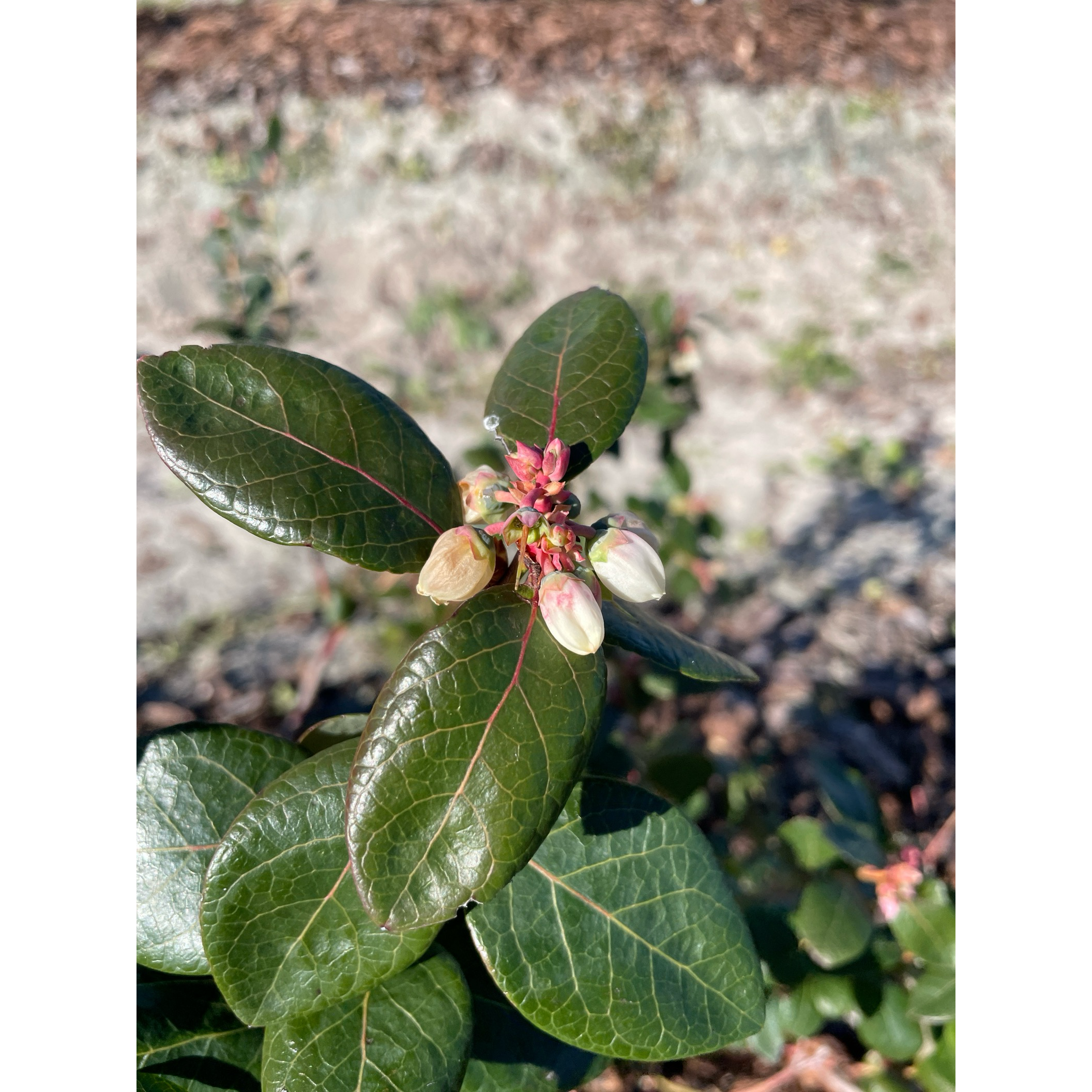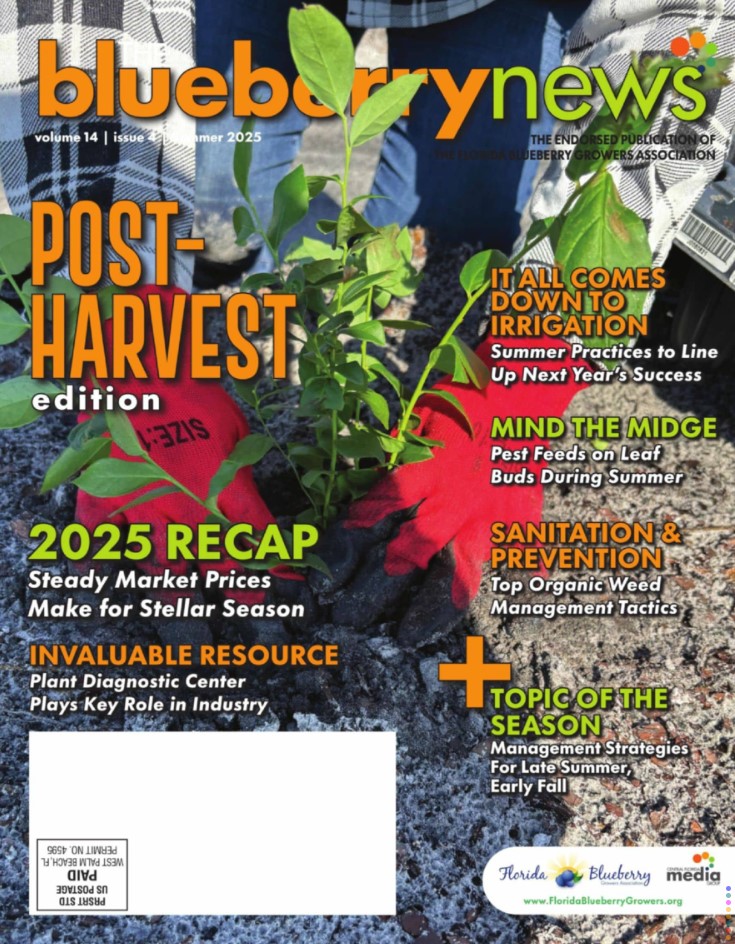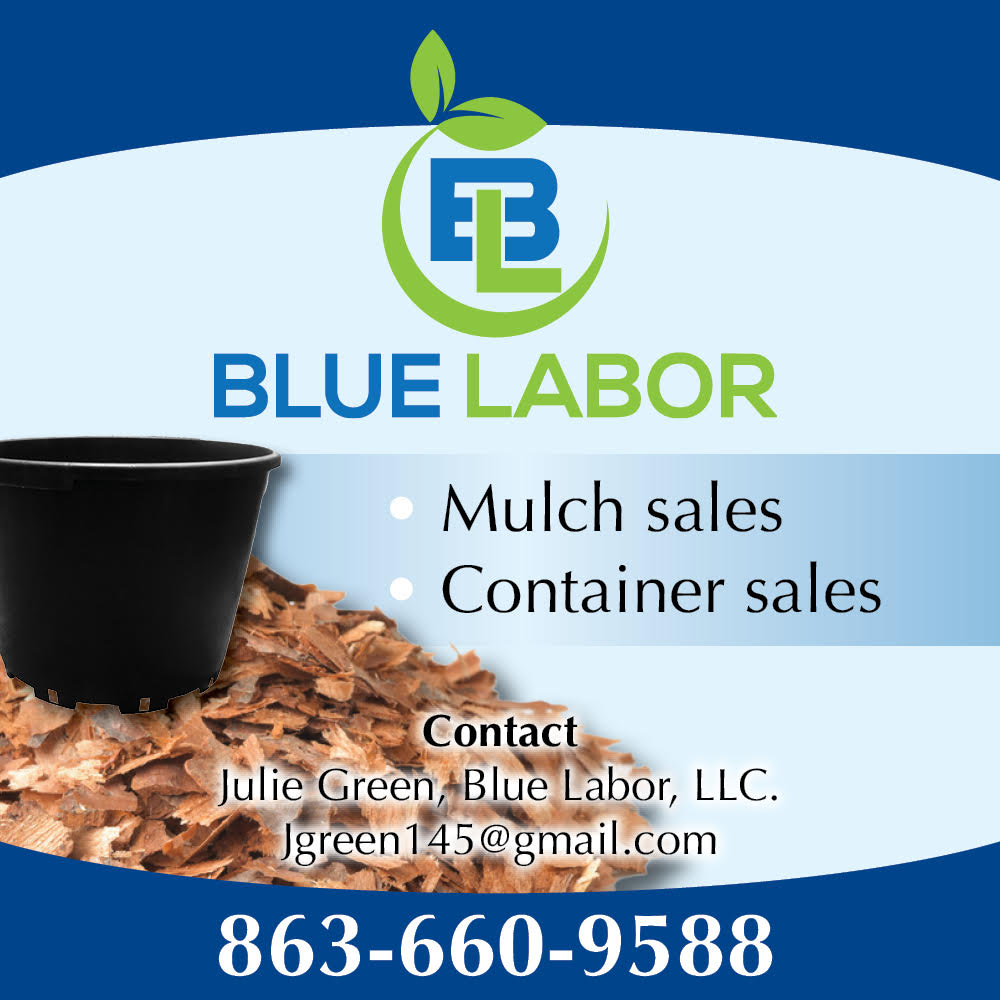Changes in Leaves Offer Insight Into Plant Health, Fruit Quality
It seems like the heat is finally starting to break. Cooler temperatures and shorter days are here, and they will change the way plants look. The lime green leaves of summer will turn darker green and even red in the fall and winter. Leaf color is a good indicator of leaf age and function. But blueberry plants always pack surprises. Here we summarize some of the main takeaways from our research at the beginning and the end of a leaf life cycle.

Red but Working
As we move into the cooler parts of the year, it is not uncommon to see leaves that turn purple or red. In other crops, this is caused by the breakdown of chlorophyll (the green leaf pigment involved in photosynthesis). However, in southern highbush blueberry, reddish leaves are still full of chlorophyll. The main reason they turn red is the accumulation of anthocyanins (a red leaf pigment used for protection from excess light). So, despite their stressed appearance, reddish blueberry leaves photosynthesize and help the plant have carbohydrates for growth, defense, and fruit quality. Additionally, these leaves inform the plant about the day length. Blueberry plants make flower buds when the days are shorter than 12 hours. Thus, having leaves in the bush - even if those leaves do not look particularly good - promotes more flower induction.

Keeping Leaves Green
Even though red leaves are functional, green leaves have higher photosynthetic rates and do more for the plant. Therefore, the play call for evergreen growers is simple: Keep leaves green. In our state, two strategies have been used for this means: high tunnels and winter fertilization. High tunnels keep air temperatures around the plant 3 to 10 degrees Fahrenheit warmer than open air. Winter fertilization does not allow the plant to take a break in growing. Last winter, we performed a study looking at the combinations of these two factors in north central Florida. We found that fertilization plays a key role in keeping leaves functional. Plants that were fertilized throughout the winter (November to February) retained more leaves and kept those leaves greener, than plants that were not fertilized. Plants that were not fertilized dropped their leaves and entered dormancy. Tunnel temperatures helped amplify the fertilization effect, but without fertilizer there was no evergreening. Most evergreen growers are in parts of the state where open air temperatures are mild enough for evergreening. So, fertilization is key. We are preparing two publications on this topic. Keep an eye out for them next Spring!
More Leaves Means Earlier Crop
Even though blueberry fruits start out green, most of the carbohydrates these fruits require for growth and ripening are derived from photosynthesis in the leaves. When there are many leaves to supply each fruit, fruit development is fast. When there are few leaves to no leaves (in the case of deciduous production), fruit development proceeds slowly. With prices dropping week by week throughout the spring, having abundant foliage can make the difference between profits and losses.
For evergreen growers, the road to early cropping starts with keeping leaves healthy through the fall and winter months. Unfortunately, this is the time when mites and rust challenge leaf health. Remember to consult the UF Blueberry App for more information on management tools against these and other pests and diseases.
Spring vegetative bud break is also important. Vegetative buds make the new foliage for the plant. In evergreen bushes, vegetative bud break can happen throughout the winter and spring. In deciduous bushes, vegetative bud break happens only once the chilling requirement has been met. In all cases, vegetative buds break only if the plant has enough nitrogen to sustain new leaves. Therefore, nitrogen from the fertilizer is necessary and ammoniacal nitrogen sources are known to promote vigorous vegetative growth.
I know we are all in the business of berries, but I believe that understanding what leaves do for the plant can help us make sense of fall and winter agrichemical applications. At least we will have good weather when we are fighting to keep those leaves happy!
CREDIT:
GERARDO H. NUNEZ





